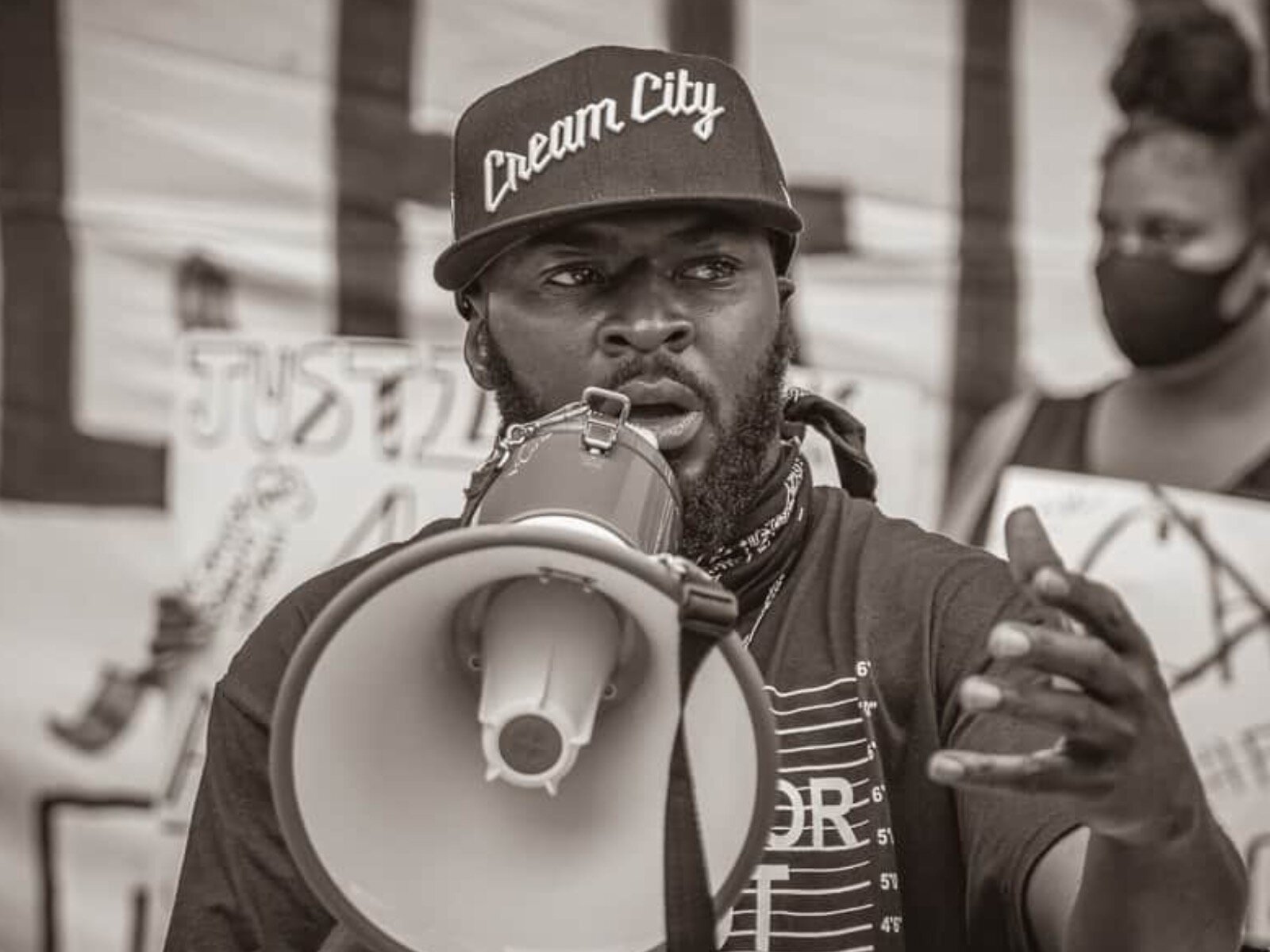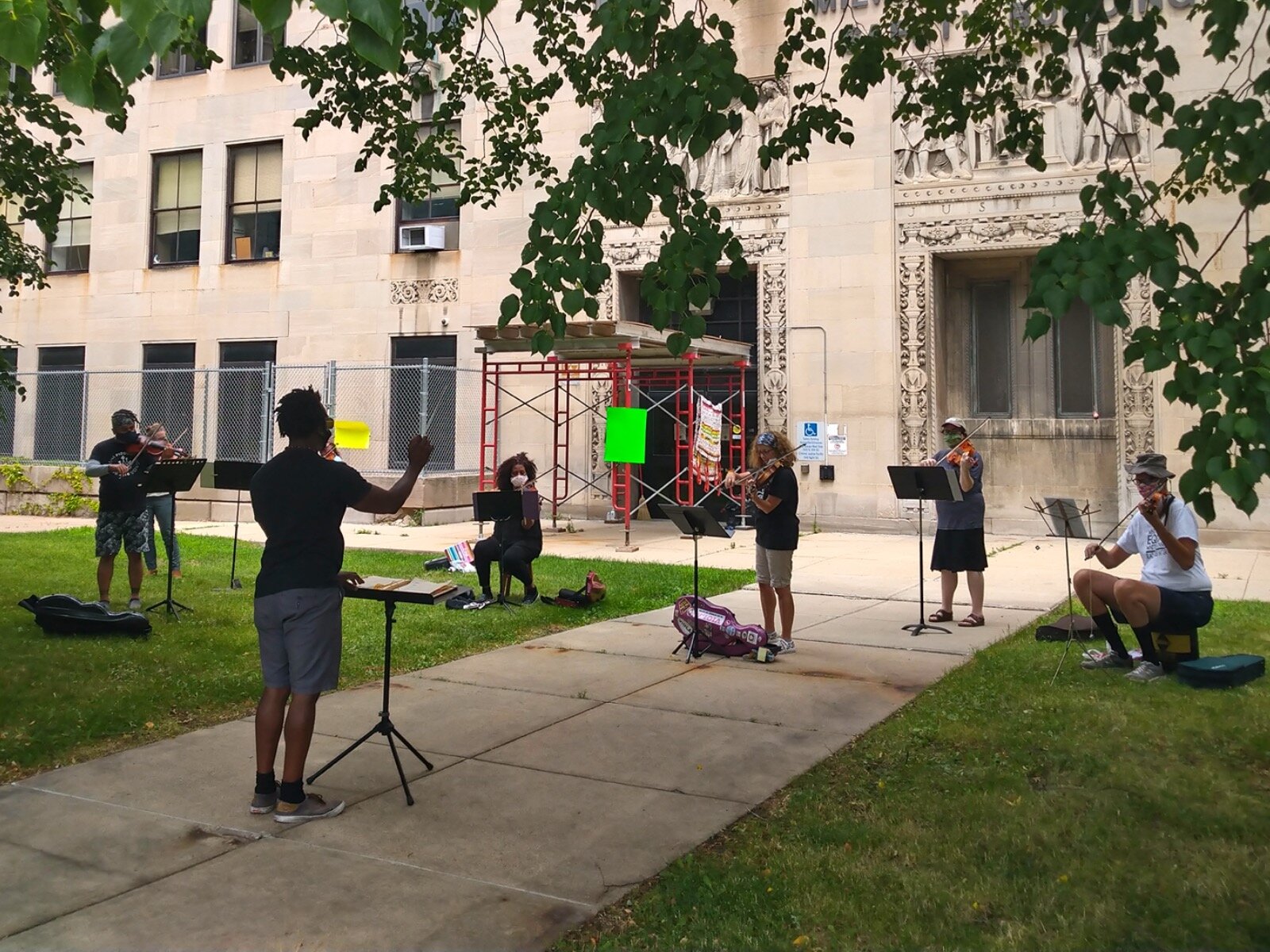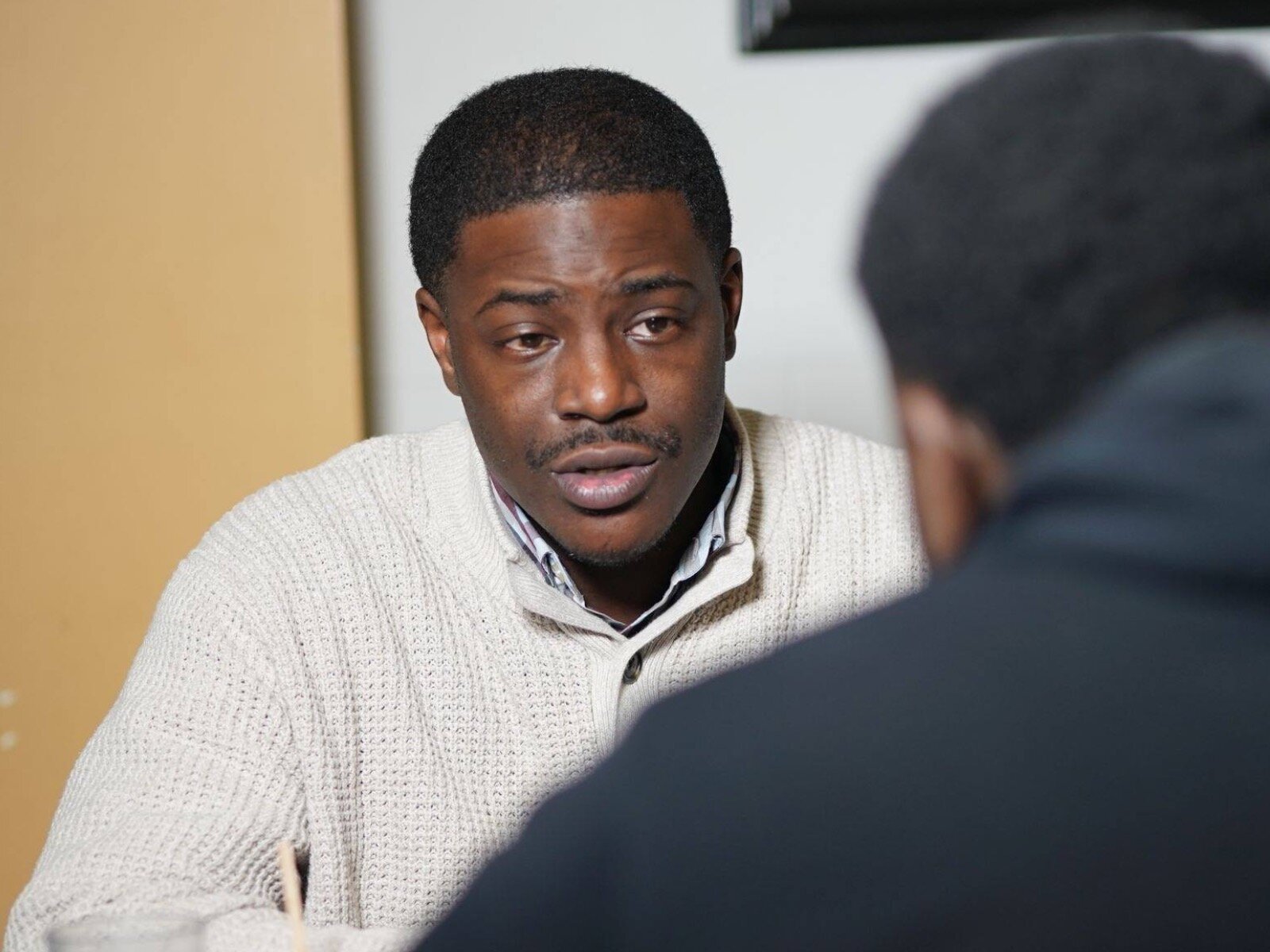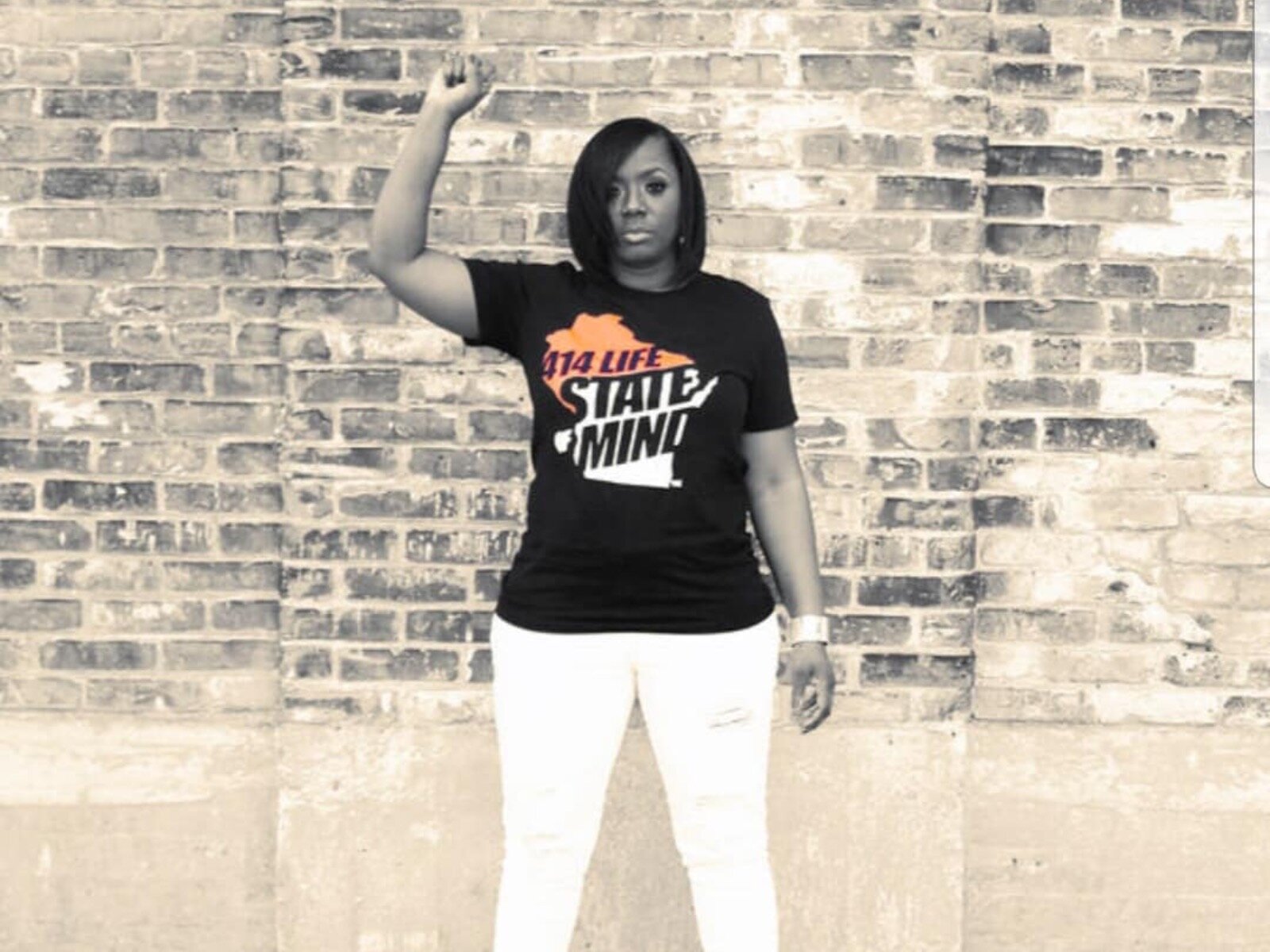As a part of his education at the New School for Community Service, Khalil Coleman worked as an intern teaching children after school at Oliver Wendell Holmes School. After graduating, he was offered a position leading him on the path from education to advocacy and activism. Since then, he’s led protests, been a part of community organizations and even written a book.
Well known throughout Milwaukee’s activist communities, Coleman has been a part of movements and protests around the country since Darius Simmons' killing in 2012. And after taking a break from leading direct action, Coleman is back, leading protests with Frank Nitty for the past several months. But this time, Coleman says, things are different.
OnMilwaukee: What do you think about the progress that has been made so far, and what do you want to see happen in the coming months?
We have made some great progress. Laws out in Wauwatosa have banned chokeholds and introduced legislation about body cams. We’ve been having conversations about firing Joseph Mensah, who killed three individuals in five years. There’s been legislation out in Cudahy to introduce racism as a public health crisis. We want the attention to educate people, so we can organize around putting laws and things in place to address things that have been happening.
Frank Nitty and you have been protesting across the state, in Brookfield, Wauwatosa and elsewhere. Where all have you been, and what is your goal behind widening where you protest?
It definitely has to be beyond Milwaukee. These issues aren’t just city issues. Wauwatosa is critical to Milwaukee County, and lots of people go through there. We’ve been to Menomonee Falls, Shorewood and all of these surrounding counties that are a part of the Milwaukee family. We understand that people from Milwaukee don’t just spend their money or time in Milwaukee; they spend it everywhere throughout the county. Black and Brown people are all over even though the percentage might be low.
When you leave Milwaukee as a Black person, you can still be pulled over by the police unjustly. This is the reason we aren’t just targeting the city of Milwaukee, but also looking to expand outreach throughout Wisconsin. We’ve been able to get some national attention from Jay Z, T.I. and the Jonas Brothers for the work we’re doing in Tosa around Joseph Mensah. We want to highlight these issues on a national level and not just keep them local.
What areas have been welcoming, and in which have you faced a lot of opposition?
I think the communities we’ve been in were very welcoming. We are organized, and people know why we’re there, and once they know that, they come out with their signs. The beauty of it is they don’t really even know where we are going. So, when we hit these surrounding areas, they already have their signs made. They walk up with their Black Lives Matter and "White silence is violence" signs, and they’re already ready for us.
Of course, we see a very small handful of individuals who are just, like, questioning. They’re like "What’s going on?" or "Why this? Why that?" They complain about the noise. We have that, but the majority of people embrace the protest who encounter it.
That’s why we’ve been able to do this for 45 days. Even though the numbers aren’t the same from day one, there is a commitment to it. There’s a group of people who show up every day and make sure their voices are heard.
Speaking of potential harassment, back in the first couple weeks, there were many instances of police brutality against protestors. Has this continued?
It’s more hidden now. In the first week, the police were in the front lines. Officers tried to stop us from going down certain streets, et cetera, et cetera. We definitely do not experience that anymore, but we see a lot of hidden attacks. People who lead protests are being targeted, and Facebook posts and Lives are being shut down. And even though there’s less police presence, there are more drones in the sky and surveillance of us.
Do you think you are being watched?
I’m pretty sure I’m being watched. It would be naive for me to think not.
What do you remember about that first day of protests?
Aw man, when I first heard about it, my spirit was definitely conflicted, and I think it opened up a lot of wounds for me. After the Dontre Hamilton marches, I fell back from leading protests for a lot of different reasons. After George Floyd was killed, it opened up a lot of unfinished business and frustration for me. I had frustrations with this system and for the community. I sat on the phone for about two days and just really did nothing.
I ended up going out to Minnesota for about three or four days and soaked in the community and that moment in time. When I finally came back to Milwaukee at like two in the morning, Vaun (Mayes) was going to have a rally. It was a speak-out about the incident with George Floyd happening later that morning.
So, I took a little nap, and then Vaun actually invited me to the speak-out. I remember going there and talking about it, and asking the crowd, "I can’t breathe! Can you breathe?’" and they yelled, "I can’t breathe," and then I was like let’s walk. That’s really where it originated. Everyone was feeling a certain type of way at the moment, and that feeling inspired hundreds of thousands of people across the world to protest.
How did you meet Frank Nitty?
I had heard of Frank during the uprising at Sherman Park. I didn’t know him personally at that time. But, I began to have more encounters with him after the uprising, you know? We would say, "Hey, how’s it going?" and eventually, we started to build more of a personal relationship.
But when the rally was taking place, the community started to recognize each other. That was when Frank started to walk with us. Originally it was just walking, and then we ended up going in the courthouse to shut it down. Some of us went inside, and the police came. We had hundreds of people outside, including Frank. Word got out that they weren’t gonna let the 50 or so people that were inside the courthouse out. That's when Frank started rallying the people, and that’s how we got together.
What was it like the courthouse? What did it look like, and what was the atmosphere?
It was intense, man. People were very supportive, and everyone protesting was willing and ready to put themselves on the line. That part of it was so beautiful. In that first week of protests, everything was original and organic. It was from the heart, and people were doing it because they believed in it. They didn’t know each other, but they were all in it together.
How can people continue to support the marches?
They can help with their time, but donations have been very sketchy with us. The movement fund only lasted a week, and I’m not sure what happened to it. The page froze, and people couldn’t donate anymore. So, we went to weeks with no funds, but then we recently created the Milwaukee MKE fund. But now that one is having issues.
So, right now, we are looking to establish something a little bit more long-term where we can push everything under the umbrella of an LLC. But right now, everything is grassroots, and we just want people to show up and participate and bring whatever supplies and resources they may have. That’s what we want. We want more people to participate and directly bring their supplies and resources, more than anything else.







